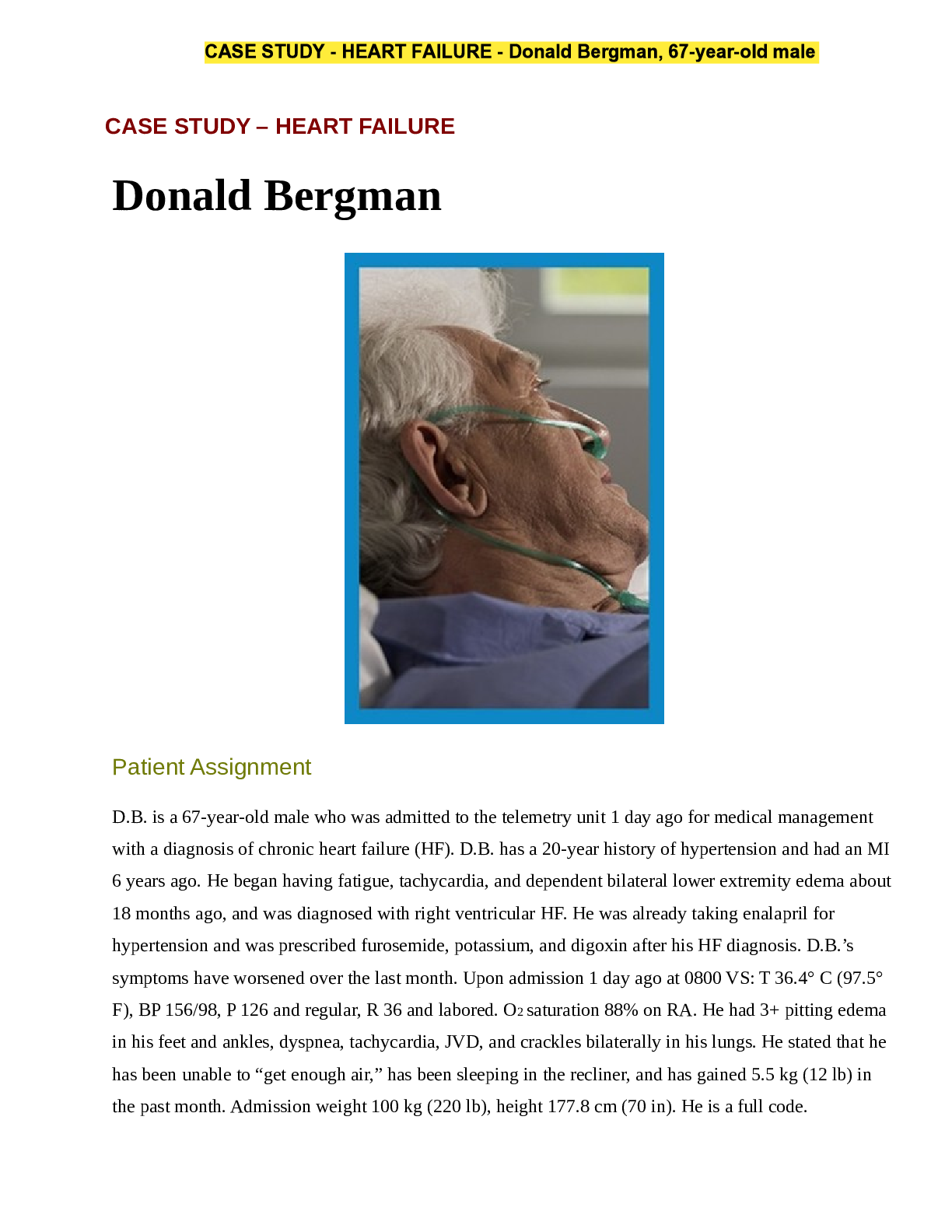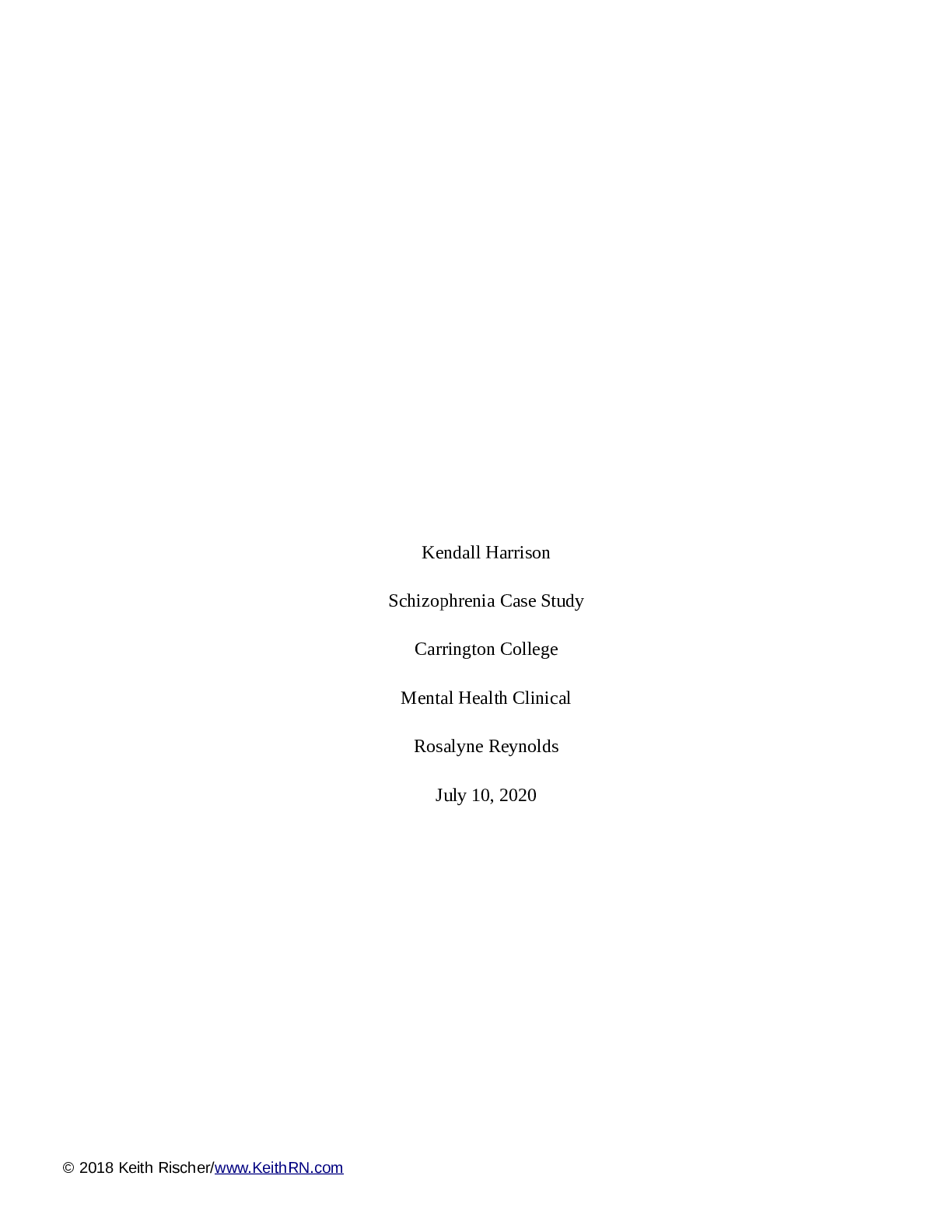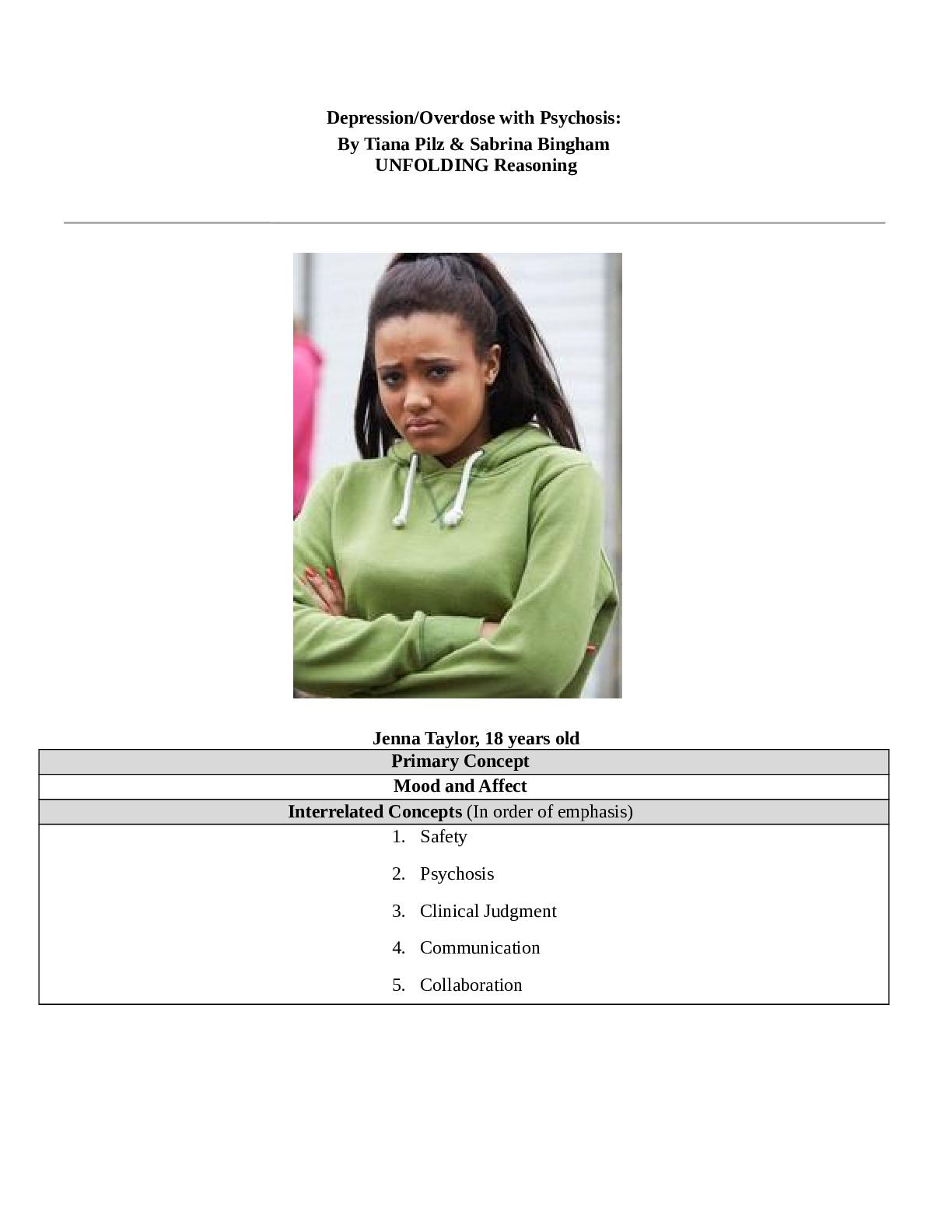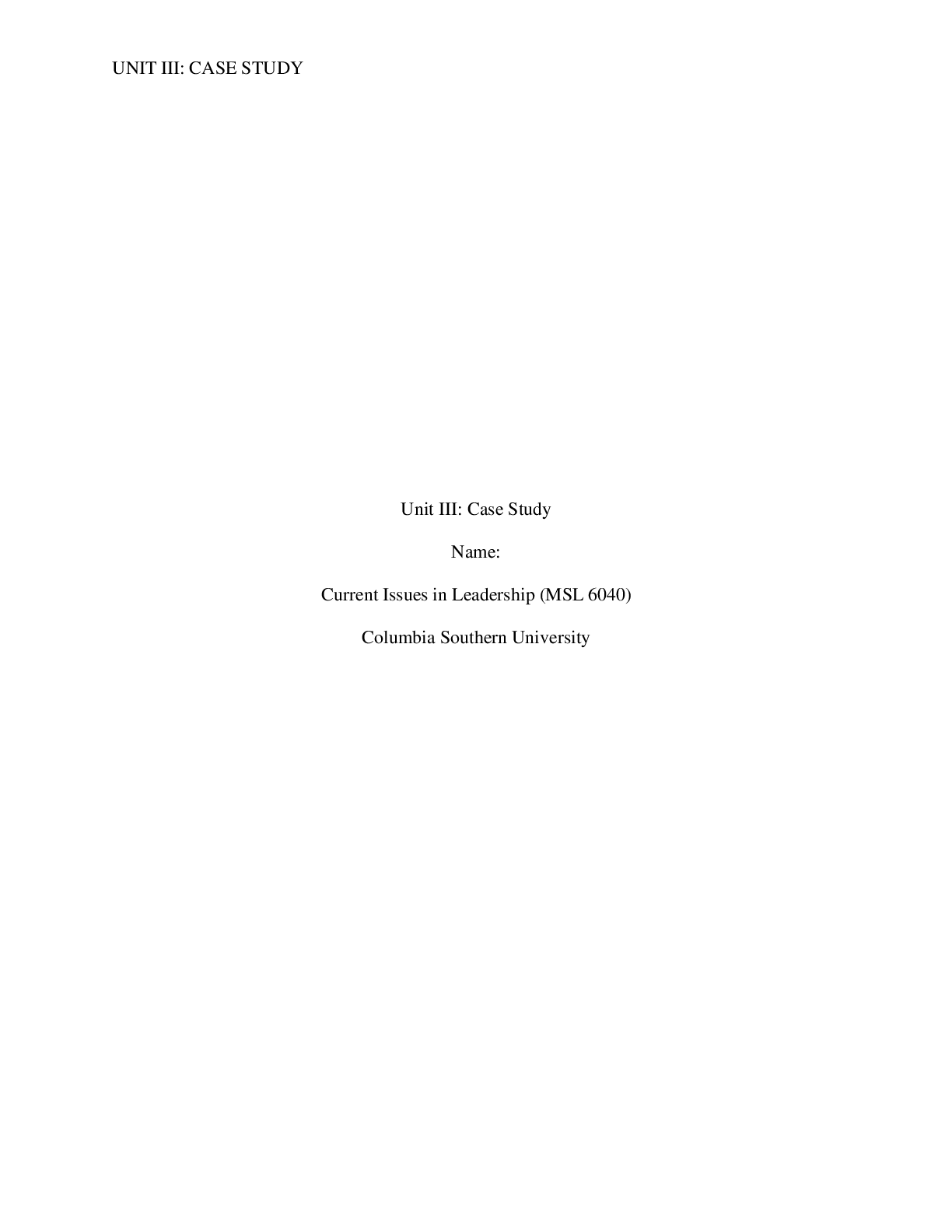*NURSING > CASE STUDY > CASE STUDY – HEART FAILURE Donald Bergman (answered) all responses 100% correct (All)
CASE STUDY – HEART FAILURE Donald Bergman (answered) all responses 100% correct
Document Content and Description Below
CASE STUDY – HEART FAILURE Donald Bergman Patient Assignment D.B. is a 67-year-old male who was admitted to the telemetry unit 1 day ago for medical management with a diagnosis of chronic h... eart failure (HF). D.B. has a 20-year history of hypertension and had an MI 6 years ago. He began having fatigue, tachycardia, and dependent bilateral lower extremity edema about 18 months ago, and was diagnosed with right ventricular HF. He was already taking enalapril for hypertension and was prescribed furosemide, potassium, and digoxin after his HF diagnosis. D.B.’s symptoms have worsened over the last month. Upon admission 1 day ago at 0800 VS: T 36.4° C (97.5° F), BP 156/98, P 126 and regular, R 36 and labored. O2 saturation 88% on RA. He had 3+ pitting edema in his feet and ankles, dyspnea, tachycardia, JVD, and crackles bilaterally in his lungs. He stated that he has been unable to “get enough air,” has been sleeping in the recliner, and has gained 5.5 kg (12 lb) in the past month. Admission weight 100 kg (220 lb), height 177.8 cm (70 in). He is a full code. Admission Orders 1. What signs and symptoms did D.B. have 18 months ago when he was diagnosed with right ventricular HF? ● He began having fatigue, tachycardia, and dependent bilateral lower extremity edema 3+. 2. What are some other signs and symptoms of right HF? 3. What do his current signs and symptoms (3+ pitting edema in his feet and ankles, 5.5 kg (12 lb) weight gain, dyspnea, tachycardia, JVD, orthopnea, and crackles bilaterally in his lungs) indicate? 4. As you begin your shift, what are your assessment priorities? 5. List at least three assessment questions that you will ask D.B. during your first encounter. 6. The intravenous (IV) furosemide is sent from the pharmacy mixed in a 50 mL bag with a concentration of 50 mg furosemide in 50 mL of D5W. What mL/hr will you set on the IV infusion pump for the furosemide 0.1 mg/kg/hr continuous IV infusion? Doctor’s order = 0.1mg/kg/hr 7. What dose of furosemide (mg/hr) is D.B. receiving? 8. Compared with D.B.’s admission assessment, which assessment findings are improved? To what do you attribute the improvement? 9. What will you do first for D.B. while you are in his room? 10. Outline the rationale for supplemental oxygen and the steps for administering oxygen through a nasal cannula. 11. D.B. asks why he has to be on “that special diet.” Explain his diet to him. 12. D.B. is concerned about “how much I can have to drink.” He states, “they gave me this piece of paper with numbers on it but I don’t understand it.” Explain the fluid restrictions to D.B. and formulate a plan for his restrictions so that he understands when he can have something to drink and how much. 1500-mL Fluid Restriction Plan for D.B. FLUID CONSUMED AT: AMOUNT in mL: Breakfast 240mL Lunch 240 mL Dinner 240mL Between meals & medications 420 mL Night shift 120 mL IV Fluids 240 mL (continuous IV infusion for furosemide medication) Today’s Lab and Test Results: 13. Interpret D.B.’s abnormal lab results. Assessment Update: 14. Write a priority nursing diagnosis statement or patient problem for D.B. 15. Write a patient-centered, measurable goal for the priority nursing diagnosis or patient problem. 16. Write at least two other nursing diagnoses statements or patient problems for D.B., then list several other potential nursing diagnoses. 17. What are some interventions that are important for D.B. today? Include medication administration and the six rights of medication administration. 18. Begin completing a CCM D.B. Complete the data section of the CCM. Use the priority nursing diagnostic statement or patient problem from question 14 along with the two other nursing diagnoses statements from question 16, and formulate an individualized plan of care for D.B. Include an evaluation of the short-term goals at this point in time. 19. When planning for D.B.’s discharge in a few days, his cardiologist is talking to him about cardiac rehabilitation. D.B. asks you to explain what the doctor means. 20. What other discharge teaching will be important for D.B. and his wife? [Show More]
Last updated: 1 year ago
Preview 1 out of 10 pages

Buy this document to get the full access instantly
Instant Download Access after purchase
Add to cartInstant download
We Accept:

Reviews( 1 )

by Liberata Ashilevi · 2 years ago
$5.00
Document information
Connected school, study & course
About the document
Uploaded On
Mar 09, 2021
Number of pages
10
Written in
Additional information
This document has been written for:
Uploaded
Mar 09, 2021
Downloads
1
Views
83



.png)




.png)



.png)


